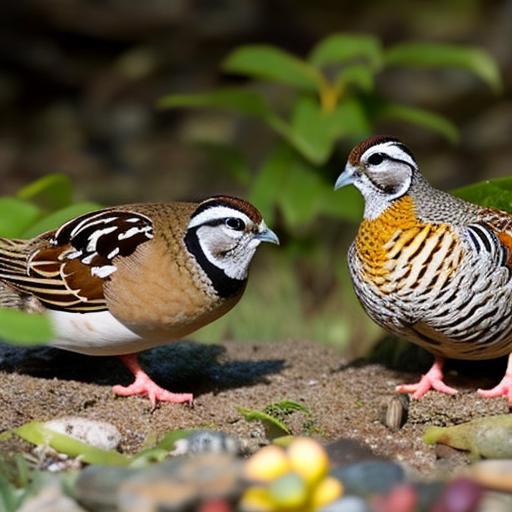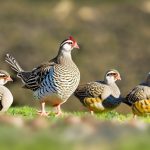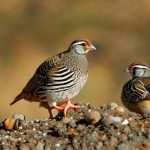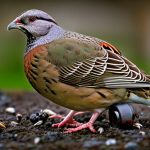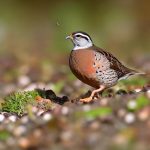Celadon quails, also known as Chinese painted quails, are small, colorful birds that are popular among bird enthusiasts for their beauty and relatively low maintenance. These quails are native to East Asia and are known for their striking plumage, which includes shades of blue, green, and brown. They are also known for their distinctive call, which is a high-pitched chirping sound that is often described as musical. Celadon quails are social birds and are best kept in pairs or small groups to prevent loneliness and stress. They are also known for their gentle nature, making them suitable pets for families with children.
Celadon quails are ground-dwelling birds and are typically found in grasslands and agricultural areas. In the wild, they feed on a diet of seeds, insects, and small plants. They are also known for their ability to fly short distances, but they spend most of their time on the ground, foraging for food and seeking shelter. In captivity, celadon quails require a similar diet and habitat to mimic their natural environment. They are relatively easy to care for and can thrive in indoor settings with the proper care and attention.
Key Takeaways
- Celadon quails are small, colorful birds that are known for their gentle nature and beautiful song.
- When setting up an indoor habitat for celadon quails, it’s important to provide a spacious and secure enclosure with proper ventilation and lighting.
- Feeding and watering celadon quails indoors requires a balanced diet of high-quality quail feed, fresh water, and occasional treats like fruits and vegetables.
- Providing enrichment for celadon quails in an indoor setting can include perches, toys, and opportunities for dust bathing to keep them mentally and physically stimulated.
- Maintaining the health and well-being of celadon quails indoors involves regular cleaning of their habitat, monitoring their behavior and appearance, and seeking veterinary care when needed.
Setting Up an Indoor Habitat for Celadon Quails
When setting up an indoor habitat for celadon quails, it’s important to provide them with enough space to move around and exercise. A large cage or aviary with plenty of room for the quails to walk and fly short distances is ideal. The cage should also have a solid bottom to prevent injury to the quails’ feet and legs. It’s important to provide a variety of perches and hiding spots to keep the quails entertained and comfortable. Natural branches, wooden perches, and small shelters can be added to the cage to create a stimulating environment for the quails.
In addition to space and enrichment, the indoor habitat should also include appropriate bedding material to keep the quails clean and comfortable. Wood shavings, straw, or sand can be used as bedding material, and it should be changed regularly to maintain cleanliness and prevent the buildup of bacteria and parasites. The cage should also be placed in a quiet area away from drafts and direct sunlight to provide a stress-free environment for the quails. Proper lighting and temperature control are also important factors to consider when setting up an indoor habitat for celadon quails.
Feeding and Watering Celadon Quails Indoors
Feeding celadon quails a balanced diet is essential for their health and well-being in an indoor setting. A high-quality commercial quail feed can be the main component of their diet, supplemented with fresh fruits, vegetables, and protein sources such as mealworms or crickets. It’s important to provide a variety of foods to ensure that the quails receive all the nutrients they need to stay healthy. Fresh water should always be available to the quails, provided in a shallow dish or waterer that is easy for them to access.
In addition to providing a balanced diet, it’s important to monitor the quails’ food and water intake to ensure that they are eating and drinking enough. Uneaten food should be removed from the cage regularly to prevent spoilage and contamination. It’s also important to keep the water dish clean and free of debris to prevent the spread of bacteria and disease. Feeding and watering celadon quails indoors requires regular attention and monitoring to ensure that they receive the proper nutrition and hydration they need to thrive.
Providing Enrichment for Celadon Quails in an Indoor Setting
Enrichment is an important aspect of caring for celadon quails in an indoor setting. Providing them with stimulating activities and toys can help prevent boredom and stress, as well as encourage natural behaviors such as foraging and exploring. Simple toys such as hanging mirrors, bells, and balls can provide entertainment for the quails and keep them mentally engaged. Natural materials such as branches, leaves, and grass can also be added to the cage to create a more naturalistic environment for the quails.
In addition to toys and natural materials, providing opportunities for exercise is important for the well-being of celadon quails in an indoor setting. Allowing them to fly short distances within the cage or providing them with a small outdoor enclosure can help them stay active and healthy. It’s also important to interact with the quails regularly by talking to them, offering treats, and gently handling them to build trust and socialize them. Providing enrichment for celadon quails in an indoor setting requires creativity and attention to their natural behaviors and needs.
Maintaining the Health and Well-being of Celadon Quails Indoors
Maintaining the health and well-being of celadon quails indoors requires regular monitoring and attention to their physical and emotional needs. Regular health checks should be conducted to ensure that the quails are free from illness or injury. Signs of illness such as lethargy, loss of appetite, or changes in behavior should be addressed promptly by a qualified avian veterinarian. It’s also important to keep the indoor habitat clean and free of debris to prevent the spread of bacteria and parasites.
In addition to physical health, it’s important to consider the emotional well-being of celadon quails in an indoor setting. Providing them with social interaction, mental stimulation, and opportunities for exercise can help prevent stress and boredom. Creating a peaceful environment with minimal noise and disturbances can also contribute to their overall well-being. Regular observation of the quails’ behavior and body language can provide valuable insights into their emotional state and help identify any potential issues that need to be addressed.
Potential Challenges of Keeping Celadon Quails Indoors
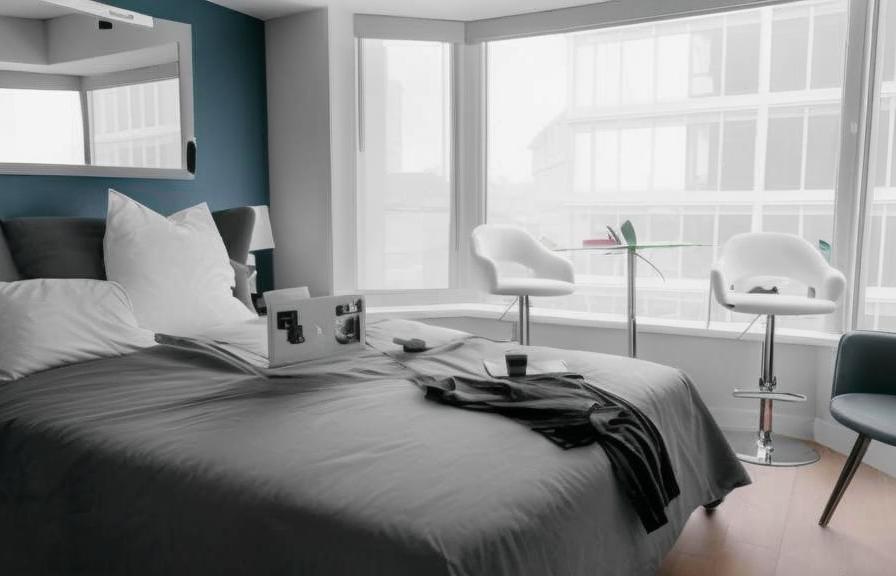
While keeping celadon quails indoors can be a rewarding experience, there are potential challenges that owners may face. One common challenge is maintaining a clean indoor habitat, as quails can be messy eaters and produce a significant amount of waste. Regular cleaning and maintenance of the cage or aviary is essential to prevent the buildup of bacteria and odors. Another challenge is providing enough space and enrichment for the quails to prevent boredom and stress. Owners may need to get creative with their indoor habitat setup to ensure that the quails have enough room to move around and engage in natural behaviors.
Another potential challenge of keeping celadon quails indoors is managing their social dynamics. Quails are social birds that thrive in pairs or small groups, but they can also be territorial and aggressive towards each other at times. Owners may need to monitor their interactions closely and provide enough space and resources to prevent conflicts. Additionally, providing a balanced diet that meets all of their nutritional needs can be challenging, especially if owners are not familiar with the specific dietary requirements of celadon quails. It’s important to research their dietary needs thoroughly and consult with a veterinarian if necessary.
Is Keeping Celadjson Quails Indoors Right for You?
Keeping celadon quails indoors can be a rewarding experience for bird enthusiasts who are willing to provide the time, attention, and resources needed to care for these beautiful birds. Understanding their natural behaviors, dietary needs, and social dynamics is essential for creating a suitable indoor habitat that meets their physical and emotional needs. Providing enrichment, maintaining their health, and addressing potential challenges are all important aspects of keeping celadon quails indoors.
Before deciding to keep celadon quails indoors, potential owners should carefully consider their ability to meet these needs and provide a suitable environment for the birds. It’s important to research their care requirements thoroughly, consult with experienced owners or avian veterinarians, and prepare a suitable indoor habitat before bringing celadon quails into your home. With proper care and attention, celadon quails can thrive in an indoor setting and bring joy to their owners for many years to come.
If you’re considering keeping Celadon quails indoors, you may also be interested in learning about the benefits of a well-designed chicken coop. Check out this informative article on the Hannah Montana Chicken Coop to discover how to create a comfortable and functional living space for your feathered friends. Understanding the importance of a suitable coop can help ensure the health and happiness of your quails as well as other poultry.
FAQs
What are celadon quails?
Celadon quails are a type of quail that are known for their unique blue-green colored eggs. They are a popular choice for backyard poultry enthusiasts due to their small size and colorful eggs.
Can you keep celadon quails indoors?
Yes, celadon quails can be kept indoors as long as they have adequate space, proper ventilation, and access to natural light. It’s important to provide them with a clean and comfortable living environment to ensure their health and well-being.
What do celadon quails eat?
Celadon quails are omnivores and their diet consists of a variety of foods including commercial quail feed, seeds, grains, fruits, and vegetables. It’s important to provide them with a balanced diet to ensure they receive the necessary nutrients for their growth and development.
How much space do celadon quails need indoors?
Celadon quails require at least 1 square foot of space per bird in their living area. It’s important to provide them with enough space to move around, exercise, and exhibit natural behaviors.
Do celadon quails need special lighting indoors?
Celadon quails benefit from natural light, so it’s important to provide them with access to sunlight or use full-spectrum lighting to mimic natural daylight. This helps regulate their internal clock and promotes healthy egg production.
Are celadon quails noisy indoors?
Celadon quails are relatively quiet compared to other poultry species, making them suitable for indoor living. However, they may still produce some noise, especially during mating or egg-laying periods.
Meet Walter, the feathered-friend fanatic of Florida! Nestled in the sunshine state, Walter struts through life with his feathered companions, clucking his way to happiness. With a coop that’s fancier than a five-star hotel, he’s the Don Juan of the chicken world. When he’s not teaching his hens to do the cha-cha, you’ll find him in a heated debate with his prized rooster, Sir Clucks-a-Lot. Walter’s poultry passion is no yolk; he’s the sunny-side-up guy you never knew you needed in your flock of friends!

